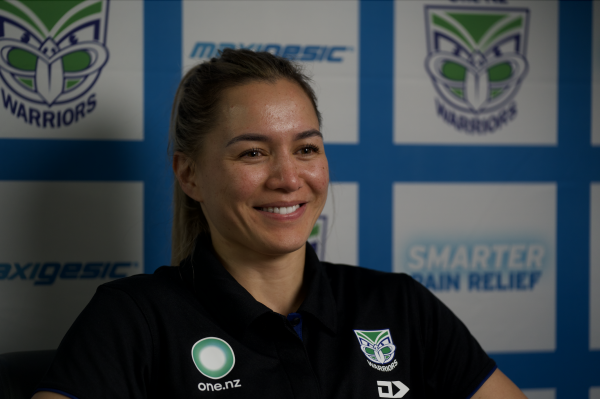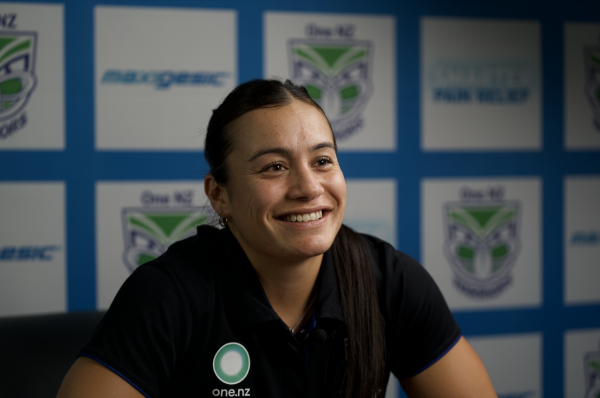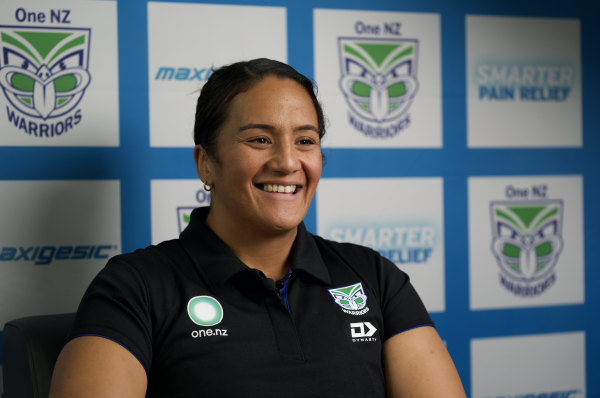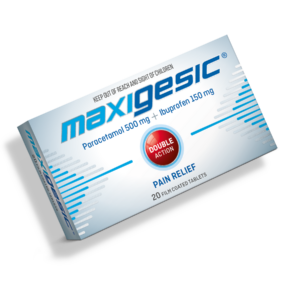The New Zealand Warriors NRLW share their stories of pain, resilience and paving the way for the next generation
Rugby league is a game of grit, drive, and unrelenting physicality—and for women carving their place in the male-dominated sport, that intensity comes with its unique set of challenges. From deep-rooted, invisible injuries to mental health battles, hormonal changes, and the pressure to prove their worth in a still-developing professional landscape, female athletes are redefining what toughness truly looks like, and it feels like they’re finally getting their flowers. With Maxigesic as the Official Pain Relief Partner of the New Zealand Warriors NRLW, Apii Nicholls, Tysha Ikenasio, and Harata Butler open up in a candid conversation about the moments that tested them the most, the strength it took to push through, and their hopes for the future of the game. Their stories are not just about pain, but power, resilience, and paving the way for the next generation of females in rugby league.

APII NICHOLLS
Rugby league can be brutal on the body—what’s the toughest moment you’ve played through, physically or mentally?
A couple of years ago, I was dealing with concussion symptoms that I didn’t fully understand at the time. I started having constant anxiety, panic attacks, and an overwhelming feeling that I was going to die. I kept playing because I didn’t want to let my team down, but I wasn’t myself. I couldn’t perform the way I knew I could, and I felt lost in my body and mind. It got so bad that I considered ending my career because I didn’t want to risk long-term health or not be here for my family. Eventually, I got help and worked with a psychologist who helped me make sense of what I was experiencing and gave me the tools to come right. Looking back, that was one of the darkest and toughest periods I’ve had in the game.
Can you share a moment where you pushed through pain or injury that stuck with you?
Playing through osteitis pubis has been one of the hardest challenges. It’s not an obvious injury; it’s deep and ongoing. There are days when I’ve had to mentally block out the pain just to train or finish a game. You learn how to switch off from what your body’s feeling in the moment, just to get through it, but doing that over and over comes at a cost.
What’s the grittiest thing you’ve seen a teammate do on the field?
Simaima Taufa played an entire season with a fresh grade 2-3 MCL tear and serious shoulder injuries. She pushed through every game, gave everything for the team and went straight into surgery once the season ended. A couple of months later, she was back on the field representing her country. She deserves to be recognised and celebrated. She is all heart, no excuses and a great leader.

TYSHA IKENASIO
How do you know the difference between playing through pain and risking long-term damage?
As an athlete, playing, performing, and training is your job, so when you can’t do that, it becomes really hard to differentiate between pain and long-term damage. I had knee pain for 8-10 years and had to have surgery at the end of last year. Enduring surgery and having to remove yourself from your ‘normal’ day-to-day routine can be hard, not only physically, but mentally, which I find is harder to deal with.
There’s a lot of talk about the challenges, but what do you love most about being a woman in this sport?
The thing I love most about women’s sport is how we continue to rewrite the narrative and exceed people’s expectations of women’s sport. Although we have overcome lots of challenges, we still have a long road ahead in women’s sport and how far we can take it. One thing I love about the game is the authentic selves that women athletes are showing and how we build each other up.
How does it feel knowing you are part of a generation changing the future of what sport looks like for young girls?
I feel that this has been one of the highlights, knowing what the future can hold for these girls to come. The generations that have come before me, I am thankful for setting up the pathway. For the NRLW and Warriors, this is only the start of what is yet to come. Hopefully, the NRLW will be full-time and women’s sport will be elevated to a whole new level.

HARATA BUTLER
How do you think pain management differs for female athletes compared to male athletes—physically, mentally, or emotionally?
I feel women athletes of my generation tend to manage the physical challenges of pain sustained through injuries or the load of training and performing with discretion, often less visibly than our male counterparts. Yet, we demonstrate immense mental and emotional resilience throughout recovery. This perseverance is shaped by the ongoing pressure to validate our place within the sports we dedicate ourselves to.
How do hormonal cycles affect your performance, recovery, or injury management?
My hormonal cycles have varied due to different contraception methods. During the luteal phase, I experience increased fatigue, mood swings, mental clarity issues, and a higher appetite. This is when I find it challenging to perform at my best, maintain motivation for recovery and injury management, and uphold resilience, character, and values. During my menstrual cycle, I experience the opposite of the luteal phase. I notice an increase in energy and a desire to be active. I feel stronger during training or exercise and more determined to complete tasks. While I am also aware of heightened emotional sensitivity, it does not seem to negatively impact my overall performance.
What changes would you like to see in the next five years to support women in rugby league?
NRLW needs to evolve into a full-time career, allowing women to focus solely on their athletic pursuits without the financial strain of maintaining additional employment. The current structure forces players to juggle seasonal contracts alongside other jobs, creating unnecessary stress in both the off-season and during competition. A professional framework would provide stability, ensuring athletes can dedicate themselves fully to the game while securing financial security for their livelihoods and responsibilities.

Maxigesic offers fast, effective relief from a range of pain symptoms commonly experienced by athletes, including headaches, migraines, back pain, and period pain. It's unique double-action formulation combines paracetamol 500mg and ibuprofen 150mg to deliver Smarter Pain Relief—proven to be more effective than either ingredient alone1.
Ref 1: Two tablets of Maxigesic four times per day provides 78% more effective relief than paracetamol 4000 mg per day and 36% more effective relief than ibuprofen 1200 mg per day given in four divided doses. Claims based on trial of post-operative pain relief after removal of 2-4 wisdom teeth. Daniels et al (2018). Always read the label. Use only as directed. Incorrect use could be harmful. If symptoms persist, see your healthcare professional. Do not use if you have asthma or a stomach ulcer. AFT Pharmaceuticals, Auckland. Patent no. 552181. TAPS PP4270.



